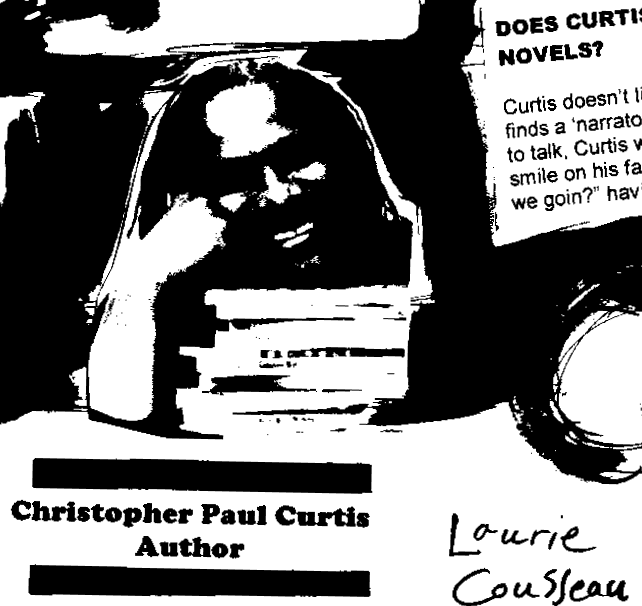
Artifact # 9
Context: Each author or poet, whether it might be Christopher Paul Curtis or Emily Dickinson, is presented to the class as an artisan who shapes words into the stories and poems of our imagination. But most importantly, authors are presented as a 'person' with 'real' families, histories, 'quirky' writing habits and unique motivators. This not only makes an author come alive for a child, but it lends them the realization that they too may have the potential to be a 'writer.' This past year, we had an artist and architect (dyslexic) visit. One of the students inquired "Do you have a 'special' place you paint?" remembering authors who also had unique niches where they worked at their craft.
This particular artifact was created for RE5140, Advanced Study of Children's Literature, taught by Dr. Connie Ulmer. Classmates were asked to come to the board with questions ( written on post-its) that were placed on a giant chalk rendering of the door of a Buick. An editor from Curtis's publishing house was available to provide information on the author's background, inspiration and writing habits.
In the classroom, I always dress up as an editor from New York and recently introduced Linda Sue Parks. This year, the students were quite disappointed when the editor from New York showed up and it was me in disguise! They had actually believed me! To make up for it, we do have a real-live editor visiting this spring (Based in New York with a division housed here in Asheville) as part of our young author's unit.
Alignment B. Knowledge of Learners: The candidate incorporates knowledge of the nature of the learner, learning processes, variations in learning abilities and learning styles, and strategies for evaluating learning into the planning, delivery, and evaluation of instruction. Revealing authors as real people allows each student to uniquely relate to the author based upon their own experiences and background. When students feel that they can 'hear' the author via the words they breathe into the pages, a classroom community that loves books and writing is born!
Alignment D. Content Knowledge: The candidate demonstrated advanced depth and breadth of knowledge and skills in the academic discipline and education. In order to connect the students to the discipline of composition through the study of an author, a teacher must have both theoretical and applied advanced content knowledge.